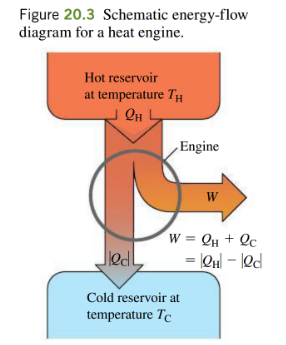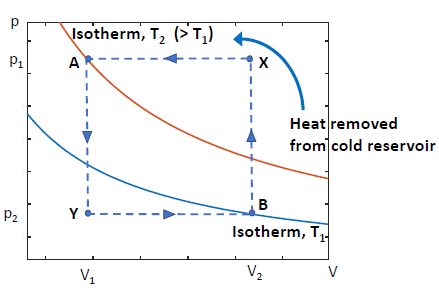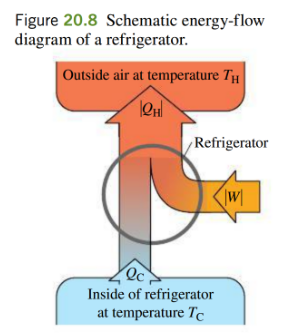PX154 - E2 - heat engine cycles and the pV diagram
cyclic processes

- from
, engine does work: - pushes out the piston
- heat input
- but from
, work is done on the system: - the piston needs to be pushed back in
- heat output
- process is useful since
is larger for than - useful work is done
- around one complete cycle:
heat engine depictions

summary
always
- the efficiency is defined as the ratio of what we want to obtain to what we have to put in:
only if , which never happens - eg: otto cycle (petrol engine), diesel cycle [YF fig 20.5-20.7], stirling cycle, carnot cycle
fridge and heat pumps
[YF 20.4]


- cycle is ran in reverse and work,
, is put into the system - efficiency, known as the coefficient of performance
or - for fridge:
- eg: rankine cycle (fridge) , stirling cycle in reverse, gifford-macmahon cycle (cryocooling), pulse tube